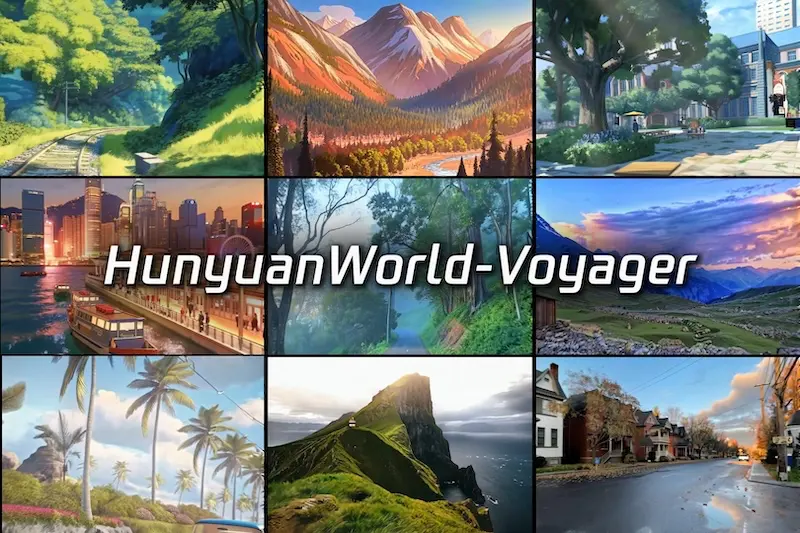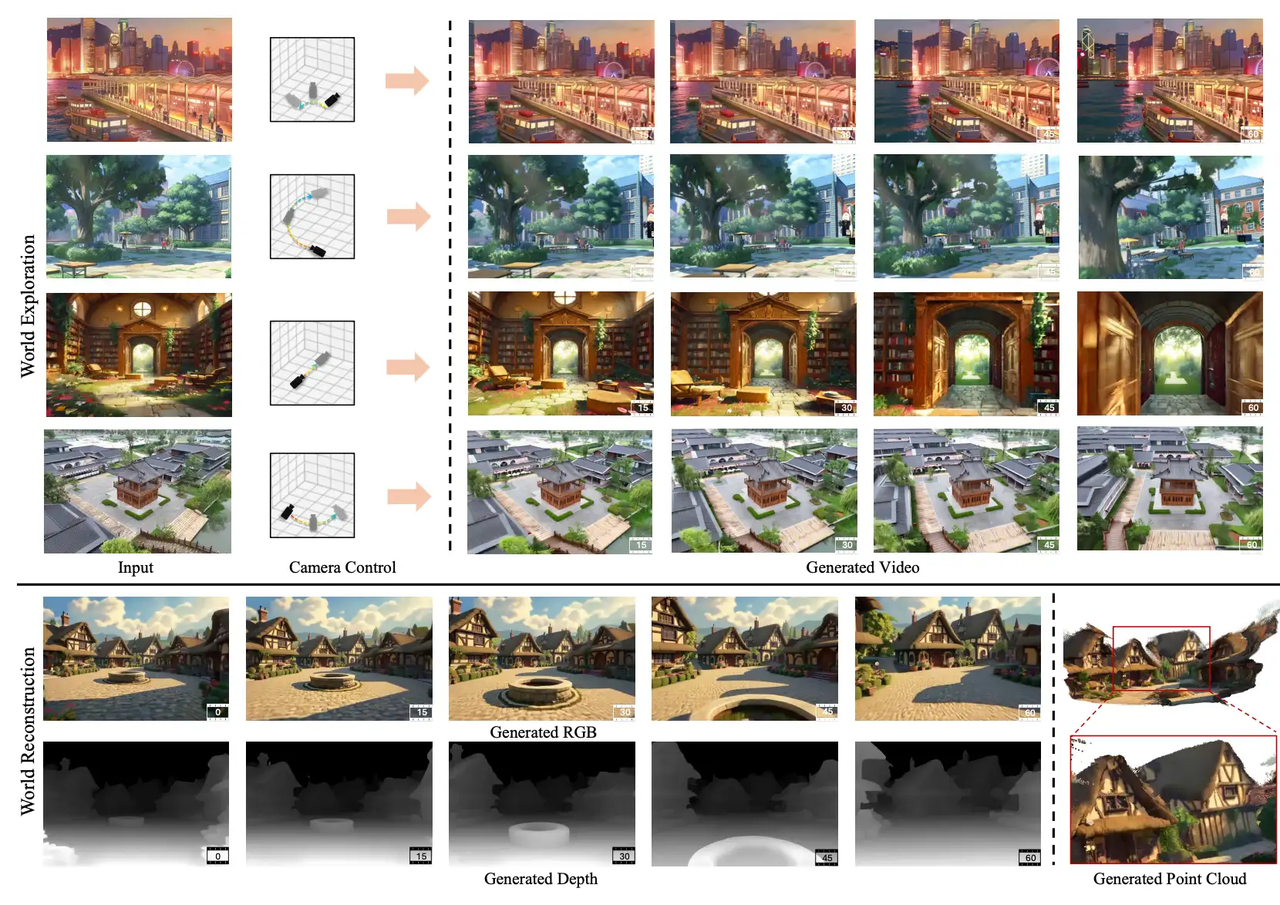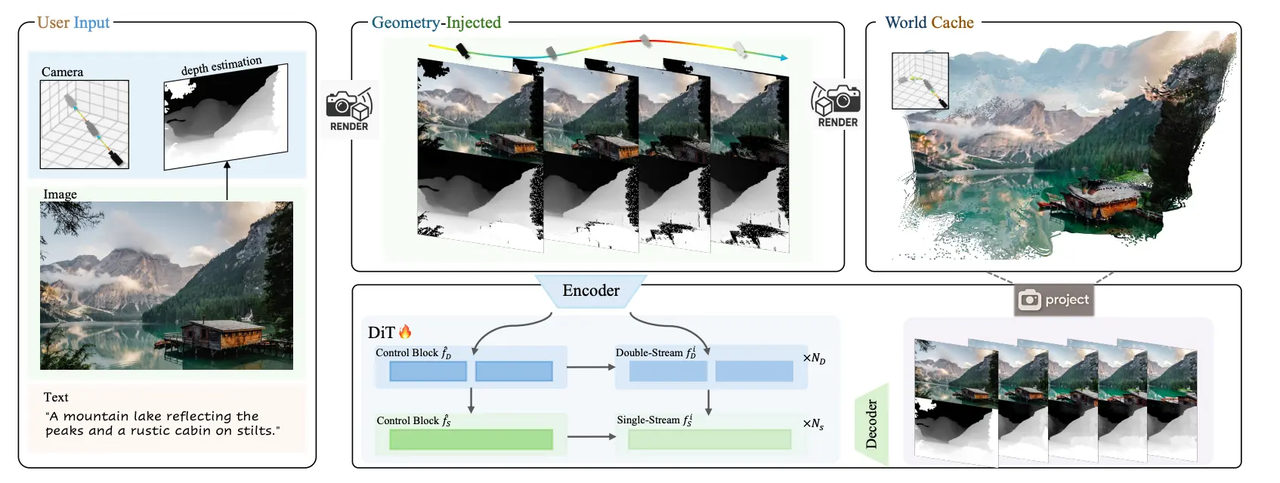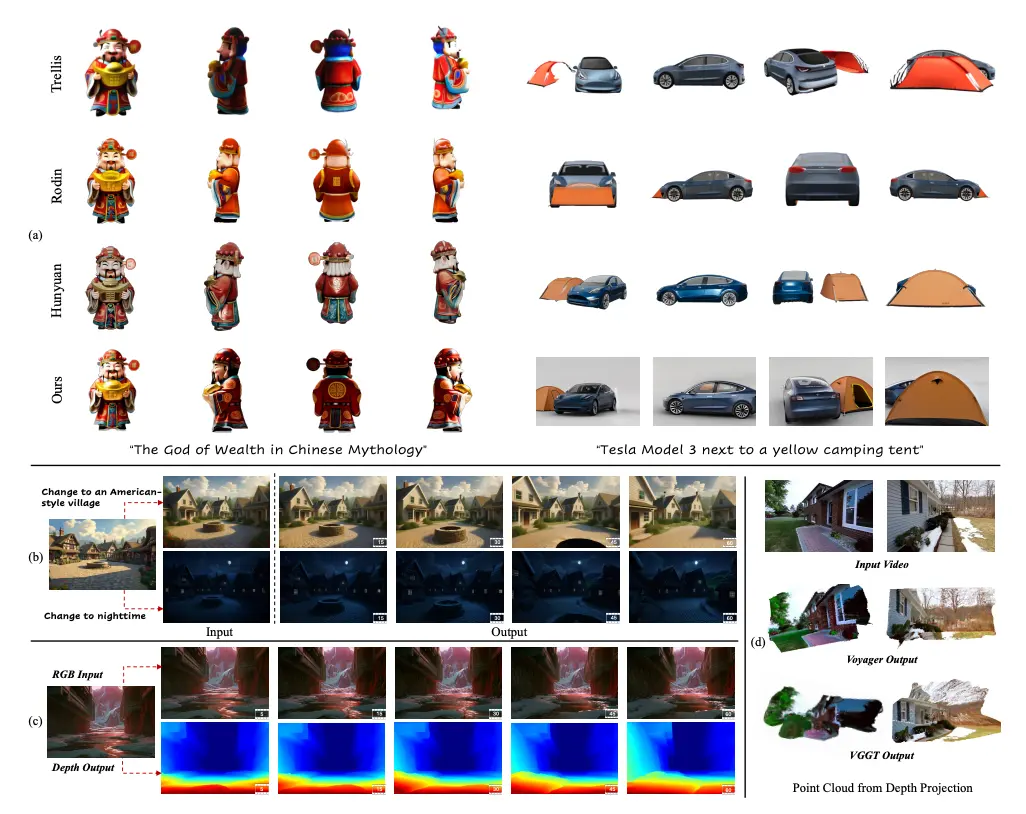Hunyuan World-Voyager's Native 3D Reconstruction vs. Genie 3's Interactive World Generation
Hunyuan World-Voyager‘s native 3D reconstruction makes it the superior choice for creating professional, geometrically accurate 3D worlds, avoiding the spatial errors common in other generative models. Abaka AI closes the gap between this powerful framework and practical application, providing the strategic implementation and custom engineering needed to build robust, scalable 3D solutions for your business.
In the race to build the metaverse, two distinct paths are emerging for creating immersive, explorable 3D worlds from a single image. On the one hand, you have interactive world generation models like "Genie 3," which excel at creating playable, dynamic environments. On the other hand, you have world-consistent video frameworks like Tencent's Hunyuan World-Voyager, which prioritize geometric accuracy and native 3D reconstruction.

For developers, designers, and creators, the question is crucial: which technology best serves the need for building scalable, high-fidelity virtual worlds? While interactive models offer exciting possibilities, Voyager’s foundational approach to 3D consistency presents a more robust solution for professional applications.
This article breaks down why Hunyuan World-Voyager's unique method of jointly generating RGB and depth data gives it a decisive edge.
The Core Challenge: Inconsistency and Hallucination
Creating an explorable 3D space from a 2D image is fraught with challenges. Most models, including many interactive world generators, face two major hurdles:
- Long-Range Spatial Inconsistency: As the virtual camera moves far from its starting point, the world begins to lose its structural integrity. Walls warp, objects shift, and the scene becomes a confusing, inconsistent mess.
- Visual Hallucination: When generating views of areas that were occluded in the original image (e.g., the space behind an object), models often "hallucinate" or invent details. This frequently leads to visual artifacts and breaks the illusion of a real, solid world.
Generative models like the hypothetical "Genie 3" might create a fun, interactive video loop, but they often struggle to build a persistent, geometrically sound 3D map. To get a usable 3D model, you'd need to run a time-consuming post-hoc reconstruction process, which often introduces its own errors.
Hunyuan World-Voyager: A New Paradigm for 3D World Building
Hunyuan World-Voyager tackles these problems head-on with a fundamentally different approach. Instead of just generating a video, it simultaneously generates aligned RGB (color) and depth video sequences. This is a game-changer.
By generating a depth map for every single frame, Voyager builds a geometrically accurate 3D point cloud of the world as it explores. This process, called native 3D reconstruction, eliminates the need for a separate, error-prone reconstruction step.

Here’s how its key components deliver superior results:
World-Consistent Video Diffusion
At its core, Voyager uses a novel video diffusion framework that is conditioned on both color and depth information. This is made possible by a sophisticated architecture that injects geometry at every step of the process. Starting with a single image, it creates an initial 3D cache that guides the generation process, ensuring every new frame is consistent with the world's established geometry.

Long-Range Exploration with an Efficient World Cache
How does Voyager maintain consistency over long distances? The answer lies in its efficient world cache. As new video frames are generated, their 3D data is added to a growing point cloud. To avoid massive computational overhead, Voyager uses an intelligent point culling method that removes redundant points, preserving only the essential geometric information. This allows for arbitrarily long camera trajectories without sacrificing quality.
A Scalable Data Engine for High-Quality Training
To train such a sophisticated model, the Hunyuan team built a scalable video data engine that automatically processes and annotates arbitrary videos with camera and depth data. By curating a massive dataset of over 100,000 video clips, they ensured Voyager's robustness across a wide range of scenes.
Beyond Exploration: A Showcase of Versatile Applications
Voyager's unique RGB-D generation unlocks capabilities far beyond simple world exploration. Its precise understanding of geometry enables a suite of advanced applications, from superior image-to-3D generation to consistent video style transfer. The model's outputs are not just visually appealing; they are structurally sound, as demonstrated by the high-quality point clouds it produces.

The Verdict: Precision and Professionalism vs. Playful Interaction
Interactive world models like "Genie 3" are paving the way for new forms of playable content. They excel at creating cause-and-effect scenarios within a limited context.
However, for applications requiring high-fidelity, persistent, and geometrically accurate 3D worlds—such as film pre-visualization, architectural walkthroughs, or professional game development—Hunyuan World-Voyager's native 3D reconstruction is the clear winner.
While others generate a video that looks 3D, Voyager generates a world that truly is 3D from the ground up.
The Abaka AI Advantage: Integrating World-Class Models into Your Workflow
Harnessing the power of a foundational model like Hunyuan World-Voyager requires more than just API access. To deploy it at scale for enterprise applications, you need robust data pipelines, seamless integration, and expert optimization. That's where Abaka AI comes in.
We specialize in helping businesses integrate cutting-edge AI models into their core operations.
- Effortless Integration: We build the infrastructure to connect powerful models like Voyager to your existing applications and creative tools.
- Data Management at Scale: We handle the complexities of managing large-scale 3D assets, camera trajectories, and generated data streams.
- Workflow Automation: We help you automate the creation of 3D environments, reducing manual effort and dramatically accelerating your production cycles.
Stop dreaming about immersive worlds and start building them on a foundation of geometric truth. Don't let technical complexity be the barrier to innovation. Build your next-generation 3D applications with an expert partner guiding you at every step.
Book a personalized demo or speak with Abaka specialists to unlock the full potential of generative 3D for your business.